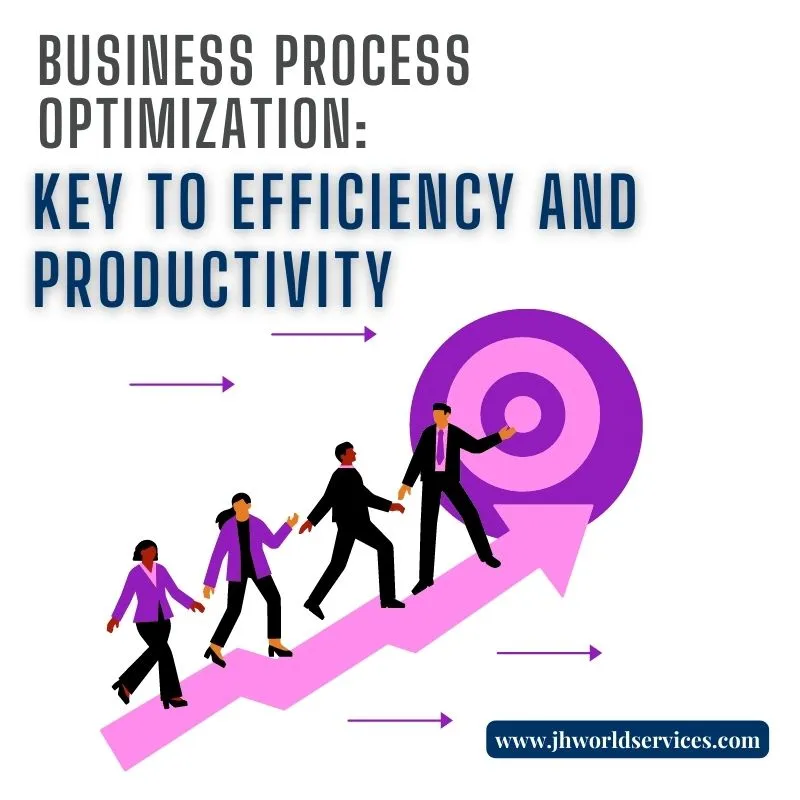In today’s competitive business world, efficiency and productivity stand as decisive factors for an organization’s sustainable success. One of the most effective ways to achieve these objectives is through the optimization of internal processes. By improving how a company conducts its tasks and activities, significant enhancements in operational efficiency and work quality can be achieved. In this article, we will explore the importance of process optimization and provide practical tips for its effective implementation.

The Importance of Business Process Optimization
Business process optimization holds significant importance, involving the meticulous task of identifying areas with potential for substantial improvements, followed by the implementation of strategic measures aimed at their optimal functionality. This optimization encompasses everything from simplifying tasks to eliminating unnecessary steps, reducing possible delays, and minimizing potential errors. By diligently applying these optimization strategies, an organization can reap a diverse range of benefits that profoundly impact its performance and results.
Enhancing Operational Efficiency
Enhanced operational efficiency undoubtedly stands as one of the foremost and inescapable advantages derived from effective business process optimization. In a masterful act of continuous improvement, the elimination of previously existing bottlenecks and subsequent optimization of the sequence of activities lead to the impressive outcome of empowering employees to complete their tasks in notably reduced timeframes, accomplishing this commendable feat with a lower investment of effort. Importantly, the benefits gained are not confined solely to individual productivity; they also cascade virtuously to significantly optimize the overall workflow.
Cost Reduction

It is crucial to underscore that business process optimization holds the potential not only to lead to but also catalyze a marked and substantial reduction in operating costs. This progressive cost reduction stems from the skillful eradication of redundant or inefficient steps, resulting in a consequent decrease in the economic outlays inherent to the time and resources invested in these steps. However, the echoes of this approach extend even further: optimization often triggers a heightened level of efficiency, which in turn translates into a decrease in demand for overtime hours and supplementary resources, thus contributing to a more frugal and sensible management of business assets.
Improved Product or Service Quality
Through the application of optimization strategies to the processes in question, a favorable avenue for quantitatively and qualitatively elevating the inherent value of the final product or service is established. The drastic reduction in error incidence and, consequently, the need for redundant corrections translate into the manufacture and delivery of products and services that closely adhere to consumer expectations. This creates a pattern of consistency and accuracy, fostering an environment conducive to heightened customer satisfaction. This achievement, in turn, establishes the groundwork for building more robust, resilient, and fruitful commercial relationships.
Tips for Implementing Process Optimization
Implementing process optimization is not without complexities, but with the right approach, it can yield profound results. Here are some essential, precisely delineated tips to serve as guiding beacons throughout the process:
Analyze and Evaluate Current Processes
This initial step sets the stage for the process, providing a conducive environment for the accurate identification of processes that require optimization. The key lies in conducting an extensive, thorough, and meticulous analysis of existing work patterns. Clear recognition of critical points emerges as an imperative step, as this recognition provides the essential foundation on which to build the pillars of optimization. Simultaneously, the formulation of clear and defined goals for the optimization process assumes the role of a reliable compass, guiding each subsequent step.
Use Project Management Tools

Project management tools are invaluable when it comes to process optimization. Utilize software that allows you to visualize workflows, assign tasks, set milestones, and track progress. This can facilitate collaboration between teams and improve communication.
Automate Repetitive Tasks
Automation plays a key role in process optimization. Identify repetitive and manual tasks that can be automated. From sending emails to data collection, automation can free up time and resources for more strategic tasks.
Foster a Culture of Continuous Improvement
Process optimization is not a one-time project; it’s a constant focus on improvement. Foster a culture where employees are encouraged to identify areas for improvement and propose solutions. Establish feedback channels and reward ideas that generate significant enhancements.
Successful Examples of Process Optimization
Several examples illustrate the positive impact of process optimization:
Inventory Management Automation
A retail company implemented an automated inventory management system. This allowed for more precise product replenishment, reducing levels of unsold inventory and enhancing customer satisfaction by ensuring product availability.
Reduced Customer Service Response Time
A customer service company optimized its customer support process by implementing a ticket tracking system. This led to more efficient ticket assignment and a significant reduction in response time, resulting in higher customer satisfaction.
Business process optimization is an essential strategy for improving efficiency and productivity in any organization. By analyzing and enhancing internal workflows, companies can achieve greater operational efficiency, lower costs, and deliver higher-quality products and services. Successfully implementing process optimization requires a holistic approach involving analysis, project management tools, automation, and a culture of continuous improvement. By embracing these principles, organizations can position themselves to tackle the challenges of an ever-evolving business environment.
Are you looking to take business process optimization to the next level?
JH World Services is your strategic partner in achieving efficiency and productivity. Our services and consultations are designed to help your company identify and improve key internal processes, utilizing project management tools and automation solutions. Just like an optimized process, our experience and personalized approach will guide you toward greater operational efficiency and improved work quality. Contact our sales team at (647) 823-4444 or our operations team at (416) 841-6040 to explore how we can collaborate to drive optimization in your company. You can also reach us at info@jhworldservices.com. We are located at 655 Dixon Road – Delta Hotel – Unit 10, Etobicoke, ON M9W 1J3. Discover how JH World Services can be the key to elevating your business processes to a higher level.

